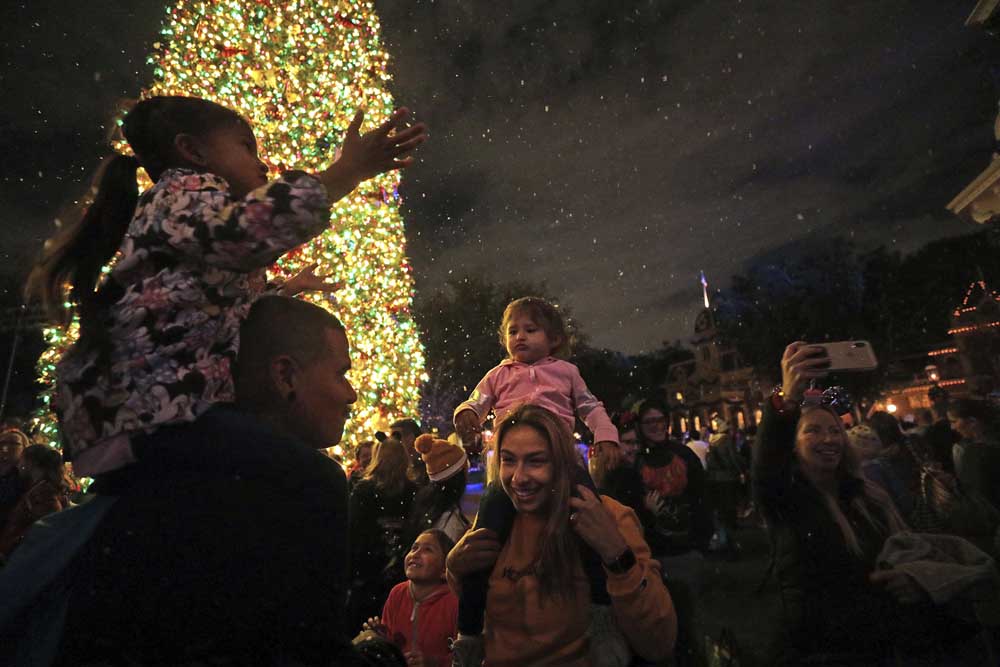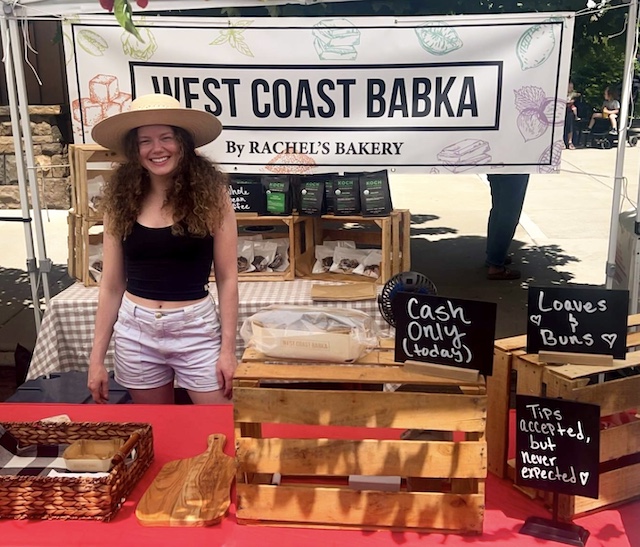Fake snow is in high demand. Just don’t ask how it’s made.
Published 12:08 pm Tuesday, December 24, 2019

- Tino Liquigan, left, and his wife, Raquel, with their daughters amid the falling ‘snow’ — on Disneyland’s Main Street on Nov. 21, 2019, in Anaheim, California.
ANAHEIM, Calif. —
The nightly holiday show on Disneyland’s Main Street culminates with soaring music and fireworks exploding high over Sleeping Beauty Castle.
But the faces in the crowds really light up when the music fades and something unexpected gently falls from the sky.
A toddler, sitting on her father’s shoulders, spreads her arms and exclaims, “It’s snow!”
Spoiler alert: It’s not really snow.
The white puffs drifting to the ground are basically soap suds, shot into the sky by powerful air blowers stationed on the roofs of nearby buildings. The wintry effect has become a must-have holiday feature for malls, zoos, theme parks and tourist attractions across sunny Southern California.
Just don’t ask how this stuff is made.
The snow-making entrepreneurs enjoying the surging demand for fake snow are tight-lipped about the ingredients, the ratio of water to soapy additive and the equipment used to spread it.
“We can’t talk about the formula,” said Mike Giles, president of Global Special Effects, who boasts having produced artificial snow for “every major theme park you can think of.” He compared divulging his snow formula with asking Colonel Sanders to disclose the 11 herbs and spices in Kentucky Fried Chicken.
The first rule of snow-making is you don’t talk about snow-making.
Big tourist attractions and shopping malls also keep mum for fear of shattering the illusion that the drifting white stuff is created when tiny ice crystals in clouds stick together to form snowflakes — and this might raise pesky questions about how the foam is really made.
But part of that secret formula has leaked out through documents that the snow makers must produce under federal rules. More on that later.
Artificial snow has been used to create a holiday atmosphere at theme parks and malls in Southern California for nearly two decades, but in the last few years the call for faux snow has surged as improved snow-making technology has come closer to simulating the real thing.
The International Assn. of Amusement Parks and Attractions expo in Orlando, Florida, this year included 13 companies that make imitation snow, up from 10 such businesses two years earlier.
Disneyland, Universal Studios Hollywood and Legoland in Carlsbad have been featuring faux snow for many years. Among those adding snow effects in recent years are Six Flags Magic Mountain in Valencia, the Citadel Outlets mall in Commerce and the Queen Mary in Long Beach.
When accompanied by seasonal music and colorful lighting, the falling fluff is a magnet for holiday shoppers — especially young Californians who rarely come in contact with the real deal.
“The consumer has a number of choices where they can shop, and we want to make our experience the best,” said Julie Jauregui, senior vice president for retail operations and leasing for Caruso, the real estate company behind several shopping centers featuring fake snow, including the Grove, Palisades Village in Pacific Palisades and the Americana at Brand in Glendale.
During a recent tree-lighting celebration at Universal Studios Hollywood, Stephen Siercks, the park’s senior director for entertainment, supervised as hidden blowers spewed artificial snow on a crowd assembled in front of a six-story-tall Christmas tree.
“The story of Grinchmas calls for snow and atmospherics,” Siercks said.
Universal Studios Hollywood loves the effect so much that this year the theme park added falling snow inside of a retail outlet for Harry Potter merchandise.
Fake snow has been a staple of Hollywood moviemaking for decades. Special effects experts say the first use of soap suds as a stand-in for snow was the 1946 holiday classic “It’s a Wonderful Life.”
Before then, snow was replicated in films with cornflakes painted white. But the sound of actors stepping on the crunchy flakes was so loud that the dialogue had to be redubbed later.
Russell Shearman, one of the special effects artists working on “It’s a Wonderful Life,” solved that problem by creating a mixture of water, soap flakes, sugar and foamite, a material used in some fire extinguishers.
Shearman won an Academy Award for his snow effect and laid the groundwork for today’s snow biz.
Regina Coffey, a nurse from San Francisco, knows the snow spewed on the crowds on Disneyland’s Main Street is not the real thing. But that hasn’t kept her and three of her best friends from visiting the theme park each holiday season for the last nine years to watch the nightly celebration that ends when the Southern California sky fills with wisps of white.
“I love it,” she said. “We come every year.”






